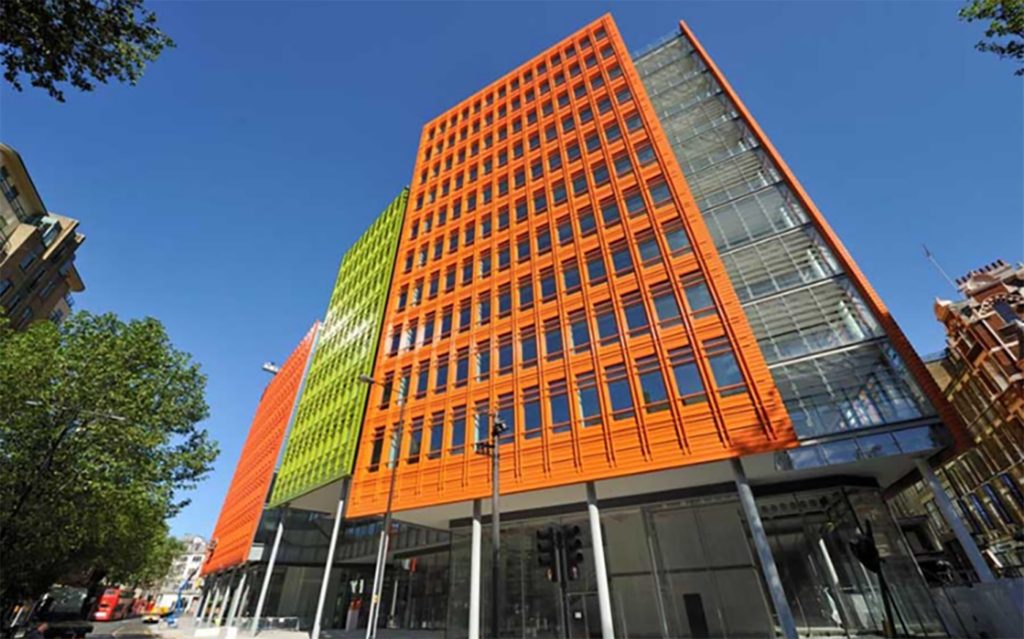
Now that Tier 4 has been announced, and we are not able to go to galleries anymore, the Gen Z team has created something similar to a gallery guide but for buildings and parks in London. Here are some places you might go and visit, to get out of the house and take in some “outdoor culture.”
Let us know in the comments if there were particular ones that took your fancy!
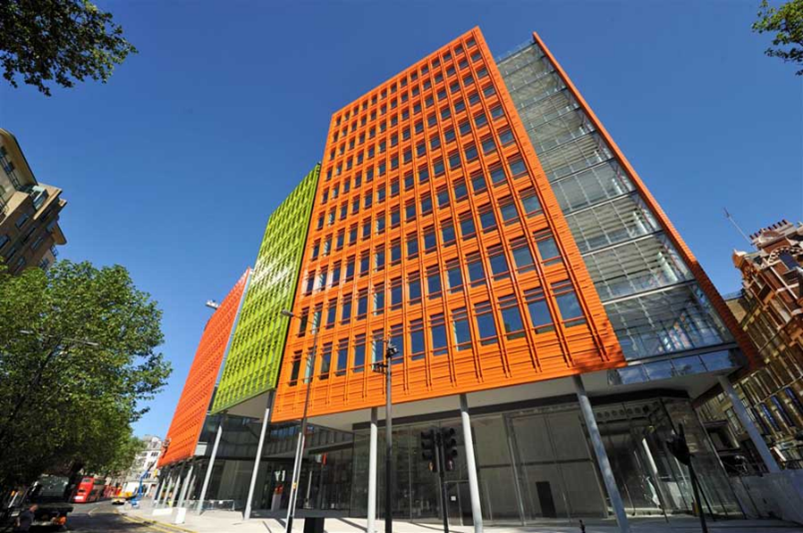
Central St Giles – Designed by architect Renzo Piano, this set of buildings is made up of 20 facades in a rage of bright colours and placed at different angles.

Liberty – Built in 1924, this mock Tudor exterior was constructed from two warships, one of which was said to be large enough that it was the same height and length as the shop itself. The historical link with ships doesn’t end there: a gilded copper weathervane of the Mayflower (the ship that first transported pilgrims to America) sits on the roof, while inside the building, memorials to staff who lost their lives fighting in WW2 are carved into the staircase.
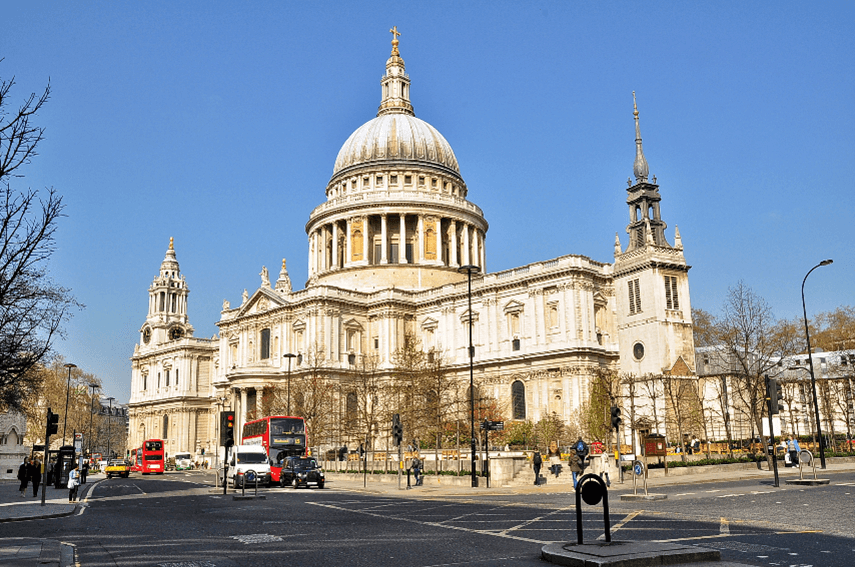
St Paul’s Cathedral – finished in 1710 and built by Sir Christopher Wren, this cathedral was the tallest building in London until 1962. Made famous by the WW2 photo of the cathedral, standing, surrounded by the destruction of the blitz, this building has a lot of historical links.
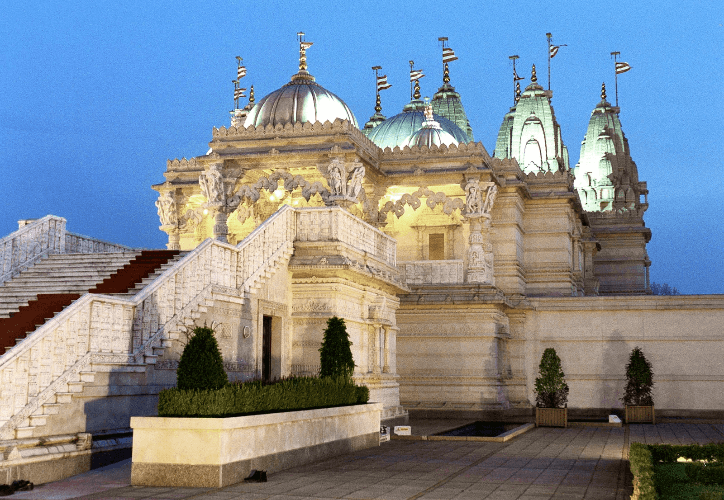
BAPS Shri Swaminarayan Mandir – built in June 1993, this Hindu temple was constructed using only traditional methods and materials. It was not only the UK’s, but also Europe’s first traditional Hindu stone temple.

Lloyd’s Building – The current Lloyd’s building (address 1 Lime Street) was designed by the architect company Richard Rogers and Partners (now Rogers Stirk Harbour + Partners) and built between 1978 and 1986. Like the Pompidou Centre in Paris (designed by Renzo Piano and Rogers), the building was innovative in having its services such as staircases, lifts, ductwork, electrical power conduits and water pipes on the outside, leaving an uncluttered space inside. It is said by Historic England to be “universally recognised as one of the key buildings of the modern epoch”.
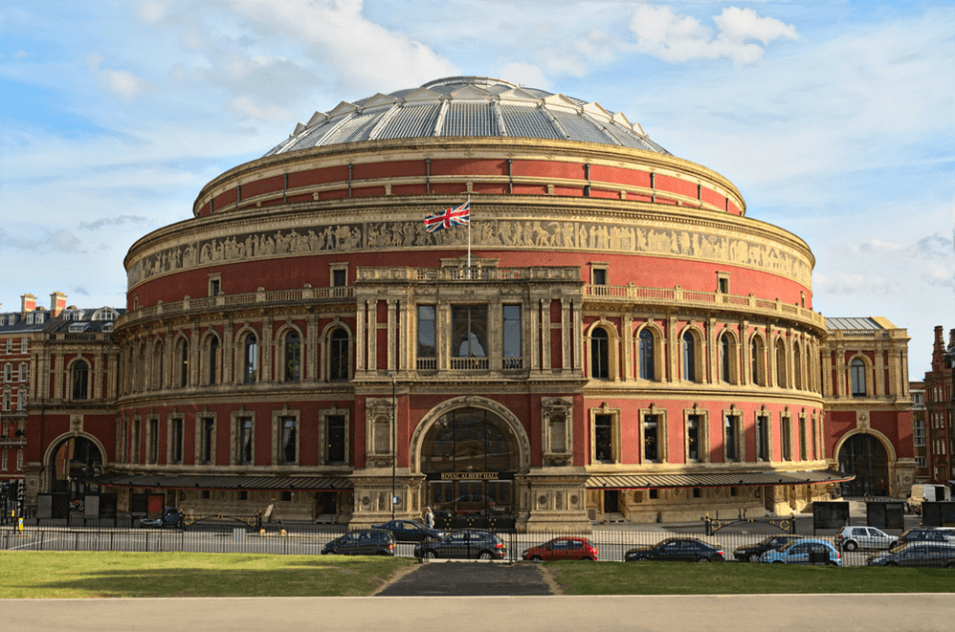
Royal Albert Hall – built in 1871, this concert hall is still one of the UK’s key venues for all kinds of music performance. Designed by Francis Fowke and Henry Scott, the shape and design of the building is strongly influenced by Ancient Roman amphitheatres. In 1949, the building underwent refurbishment due to its poor acoustics, and 135 ’mushrooms’ were installed in the ceiling. You can find out more about this on our blog!

Haringey Brick House – It is short-listed for the 2015 RIBA (Royal Institute of British Architects) London regional awards for architecture. The result of a total overhaul of a dilapidated former garage plot turned into an incredibly unique home. It is located at the end of a row of traditional Victorian terrace houses. The warmth of the materials used is a splendid example of how contemporary and traditional can live side-by-side.
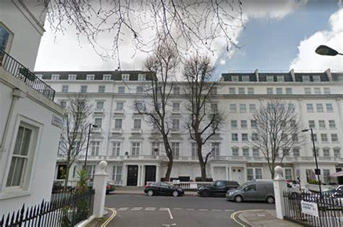
Leinster gardens – two of the houses along this street aren’t real at all! Can you spot which ones?
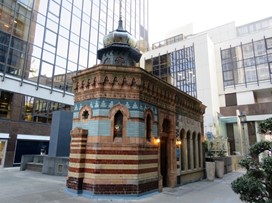
The Victorian Bath House, Bishopsgate – This Turkish bath originated as a men-only baths from 1895 until 1954, but now is only used as a venue for parties and events. Having survived the Blitz and many redevelopments it is now Grade II-listed and beautifully renovated.
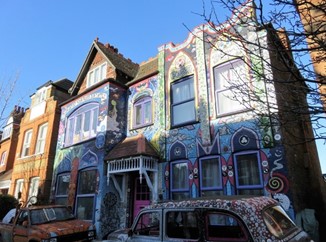
The Treatment Rooms, Chiswick Park – This three-storey house in Chiswick is the home of artist Carrie Reichardt, and the mosaic-covered exterior is a technicolour work-in-progress by Carrie and fellow artists from all over the world. There’s an exciting tiled pick-up truck and London taxi parked outside.

Croydon Water Works – This Grade II-listed water tower and pumping station in Exchange Square was completed in 1866. The building has remained empty, but Historic England and Croydon Council are considering ideas for its future use. In the meantime, local street artist Rich Simmons has decorated the tower with a much-admired mural of paparazzi photographing Princess Diana.
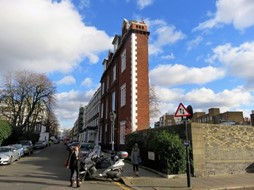
Thin house, South Kensington – Breathe in… this end-of-terrace house on Thurloe Square is barely 7ft wide at the thinnest edge of the wedge – although it does widen out to a whopping 34ft. The reason for its odd shape? To accommodate the District and Circle line that runs directly behind the building. A one-room studio flat inside the house was recently on the market for £895,000.
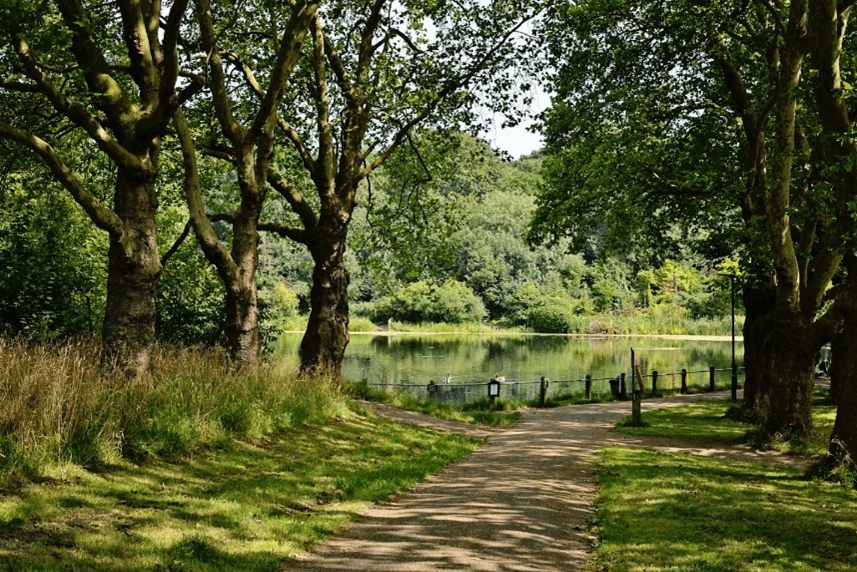
Hampstead heath – sitting next to a sandy ridge, running from Hampstead to Highgate, on London Clay, the heath is rambling and hilly, with ponds, recent and ancient woodlands, a lido, playgrounds, and a training track.

Regent’s park – Previously known as Marylebone Park, it was a royal chase until 1646. The vast rounded park was designed by John Nash, and soon became the home of several organisations like the Zoological Society and the Royal Botanic Society. The public were not allowed to visit the park until 1835. In the 1930s, Queen Mary’s Gardens were built, leaving us with the park we know today.

Richmond park -created by Charles I in the 17th century as a deer park it is the largest of London’s Royal Parks and holds national and international importance for wildlife conservation.

Battersea park – prior to 1846 the area now covered by the park was known as Battersea fields, a popular spot for duelling.

St James Park – the oldest Royal Park in London, it is surrounded by three palaces. The most ancient is Westminster, which has now become the Houses of Parliament, St James’s Palace and (most famously), Buckingham Palace.